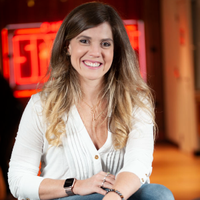Artificial intelligence & robotics
Irene Solaiman
A new approach to the release of GPT-2, a predecessor to ChatGPT.

Brazil
Alexandre Messina

Brazil
Pedro Freire
An AI platform that predicts chronic diseases and helps prevent healthcare fraud.

Global
Catherine De Wolf
Using AI to help reduce emissions and waste of materials in the construction industry.

Brazil
Carla Moussalli
Creating a platform for chronic pain telemonitoring that enables remote training and physical therapy sessions.
